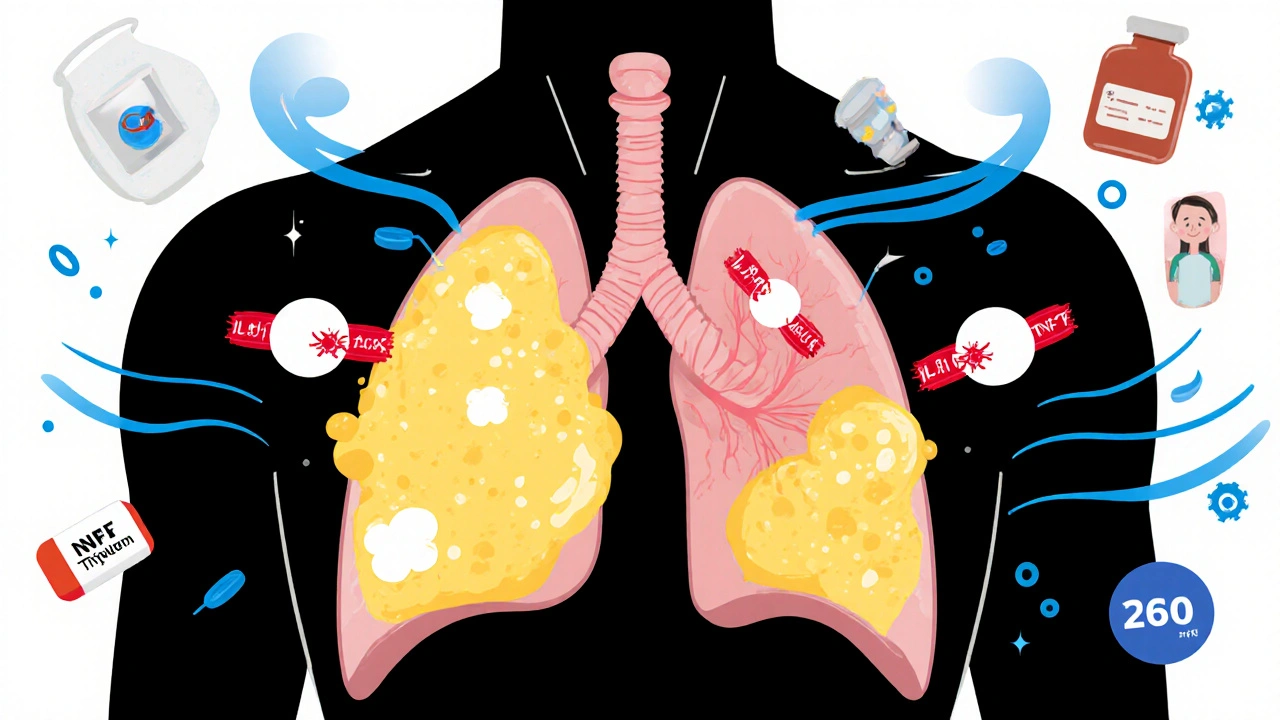Azithromycin for Pneumonia: What You Need to Know
When azithromycin, a macrolide antibiotic often prescribed for respiratory infections like pneumonia. Also known as Zithromax, it’s one of the most commonly used oral antibiotics for community-acquired pneumonia. Many people get it because it’s convenient—one pill a day for just 3 to 5 days. But it’s not a magic bullet. For some types of pneumonia, especially those caused by resistant bacteria or viruses, azithromycin won’t help at all. And in others, it might even cause serious side effects.
It works best against certain bacteria like Streptococcus pneumoniae and Haemophilus influenzae, which are common culprits in mild to moderate pneumonia cases. But if your infection is caused by something else—like MRSA, tuberculosis, or a virus—azithromycin won’t touch it. That’s why doctors often pair it with other antibiotics, like amoxicillin or doxycycline, especially in more severe cases. The combo increases coverage and improves outcomes. You’ll also find that azithromycin is sometimes used in people who are allergic to penicillin, since it’s from a different drug family. But here’s the catch: it’s not always safer. Azithromycin can affect your heart rhythm by causing QT prolongation, a delay in the heart’s electrical recovery that can lead to dangerous arrhythmias, especially if you already have heart problems, low potassium, or are taking other drugs that do the same thing.
And then there’s the issue of overuse. Because it’s easy to prescribe and patients like the short course, azithromycin has been thrown at everything from colds to sinus infections—even when there’s no proof of bacteria. That’s how resistant strains grow. The CDC warns that unnecessary antibiotic use is one of the biggest threats to modern medicine. So if your doctor gives you azithromycin for pneumonia, make sure they’ve ruled out viral causes and considered your medical history. Don’t assume it’s the right choice just because it’s popular.
Side effects are usually mild—stomach upset, nausea, diarrhea—but they can be worse for older adults or people with liver disease. Some people report dizziness or ringing in the ears. And while rare, allergic reactions happen. If you get a rash, swelling, or trouble breathing after taking it, stop and get help right away. Also, don’t take it with antacids containing aluminum or magnesium—they can block absorption. Take it at least an hour before or two hours after those meds.
What you’ll find in the articles below are real, practical insights from people who’ve dealt with pneumonia, antibiotics, and the messy middle ground between them. You’ll read about how macrolide antibiotics, a class that includes azithromycin, clarithromycin, and erythromycin compare to other treatments, why some patients get worse instead of better, and how to spot when a drug isn’t working. There are also guides on monitoring heart risks, managing side effects, and knowing when to push back on a prescription. This isn’t theory—it’s what people actually experience when they’re sick, confused, and trying to do the right thing.
Azithromycin is increasingly used alongside drainage to treat empyema, thanks to its strong tissue penetration and anti-inflammatory effects. Learn how it improves outcomes, reduces hospital stays, and when it’s most effective.






